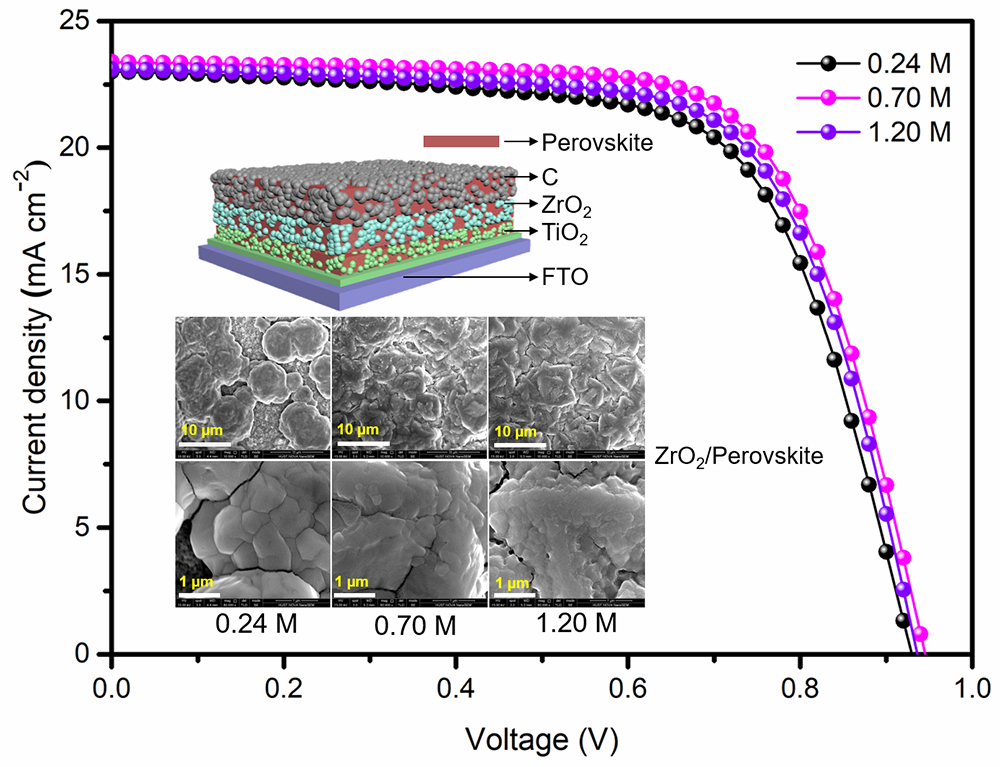Detailed parameters of the
J–V curves (reverse scan from the short to the open circuit) together with the forward scan (from the open to the short circuit) performance parameters are presented in Table 1. The efficiencies of the reverse scan for PMPSCs obtained from different precursor concentrations of 0.24, 0.41, 0.55, 0.70, 0.83, 1.00, and 1.20 M are 14.29%, 14.84%, 15.11%, 15.31%, 15.06%, 14.85%, and 14.83%, respectively. The highest efficiency is obtained at a moderate concentration of 0.70 M. The efficiencies from the forward scan are 15.38%, 15.67%, 16.00%, 16.32%, 16.12%, 16.09%, and 15.89%, respectively. The highest efficiency obtained is 16.32%. The efficiency of the forward scan is evidently larger than that of the reverse scan, indicating an abnormal hysteresis phenomenon [
29,
30]. Previous research has demonstrated that this phenomenon is related to both charge accumulation and imbalanced charge extraction. To obtain an accurate PCE under conditions of hysteresis, a steady-state current density output under a given voltage bias from a maximum power point was conducted. The steady-state current density output results of those PMPSCs prepared with precursors of different concentrations are shown in Fig. 3(e). The calculated steady efficiencies are 14.35%, 14.65%, 15.09%, 15.35%, 15.16%, 14.98%, and 14.82%, respectively, which are similar to the efficiency values obtained by the reverse scan. It is evident from the steady-state current density that a low concentration of 0.24 M and a high concentration of 1.20 M lead to a lower current density than the moderate concentration of 0.7 M. This finding is consistent with the trend shown by the IPCE results in Fig. 3(f). At a low concentration of 0.24 M, the IPCE is lower due to insufficient pore filling. At a high concentration of 1.20 M, the device demonstrates a quicker drop of photon conversion efficiency in the band of 550–800 nm. This is probably due to the inability of smaller grains induced by higher concentrations to effectively absorb long-wavelength photons.









